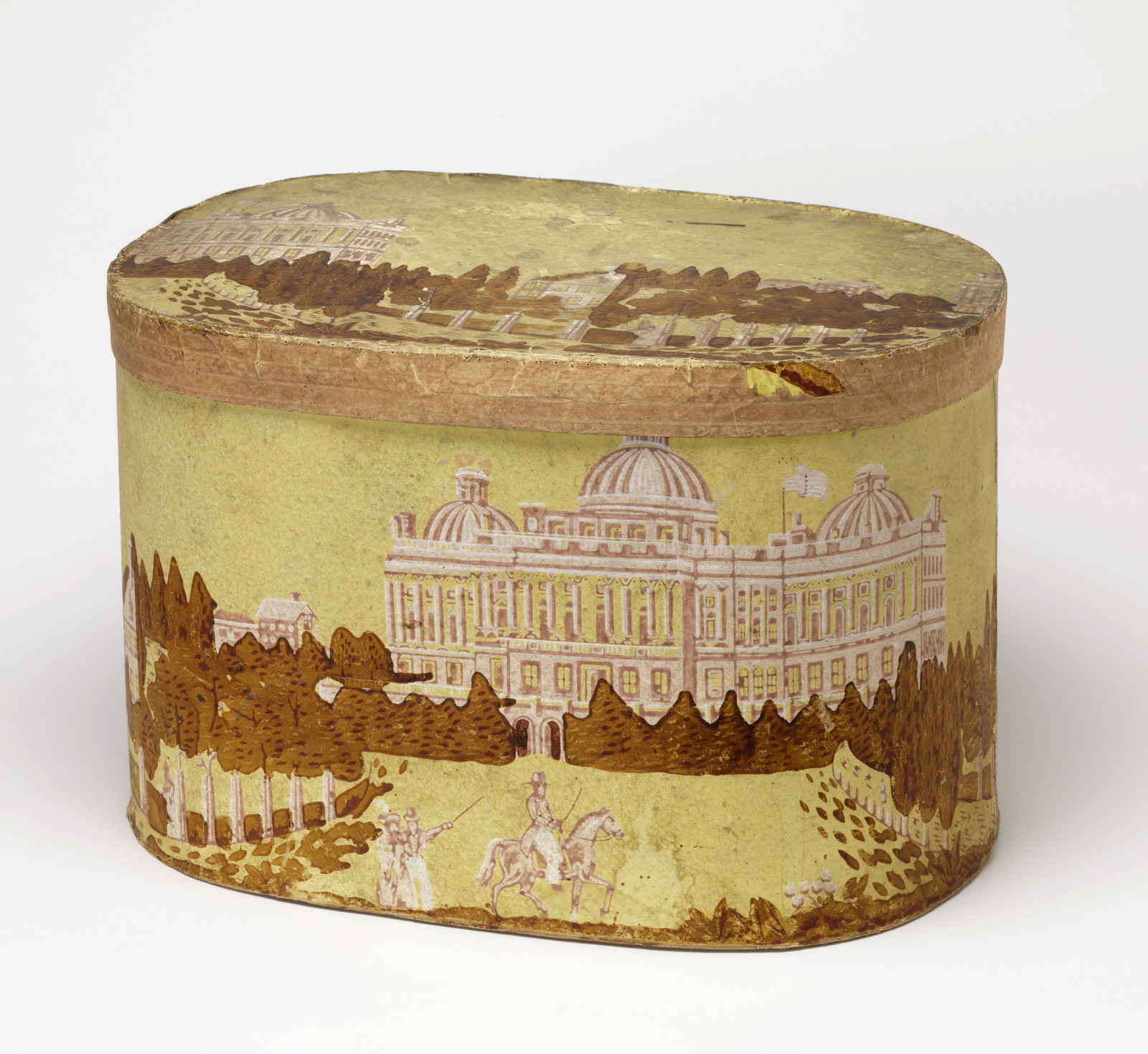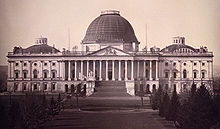This bandbox design shows the US Capitol Building as it looked between the years 1826 and 1850. Initial construction on the Capitol began on September 18, 1793 and was completed in stages, with the senate north wing being completed in 1800, and the House of Representatives south wing completed in 1811. Not long after the completion of both wings the building was partially burned by the British in 1814. Reconstruction began the following year and continued through 1826. This reconstruction included the addition of the columned portico and the first low dome on the capitol. By 1850 it was clear the building could not accommodate the growing number of legislators and an expansion was planned, which included the addition of a new larger dome. So the building illustrated on the bandbox is showing the Capitol as it looked between the years 1826 and 1850 as it includes the low dome and the columned portico. Many of the early landscape wallpaper designs were inspired by, or copies of, existing prints. This illustration closely resembles a daguerreotype by John Plumbe made in 1846.
Bandboxes were quite popular during the first half of the 19th century and were used for the storage and transport of men’s collar bands, hats, and as general carryalls. While some bandbox exteriors were covered with wallpaper, most were wrapped with papers made specifically for coverings bandboxes. These papers frequently contained landscape, hunt or mythological scenes. During the 1830s-40s many papers were printed with scenes commemorating historic events.
Gregory Herringshaw is the head of the Wallcoverings Department at Cooper Hewitt, Smithsonian Design Museum.

